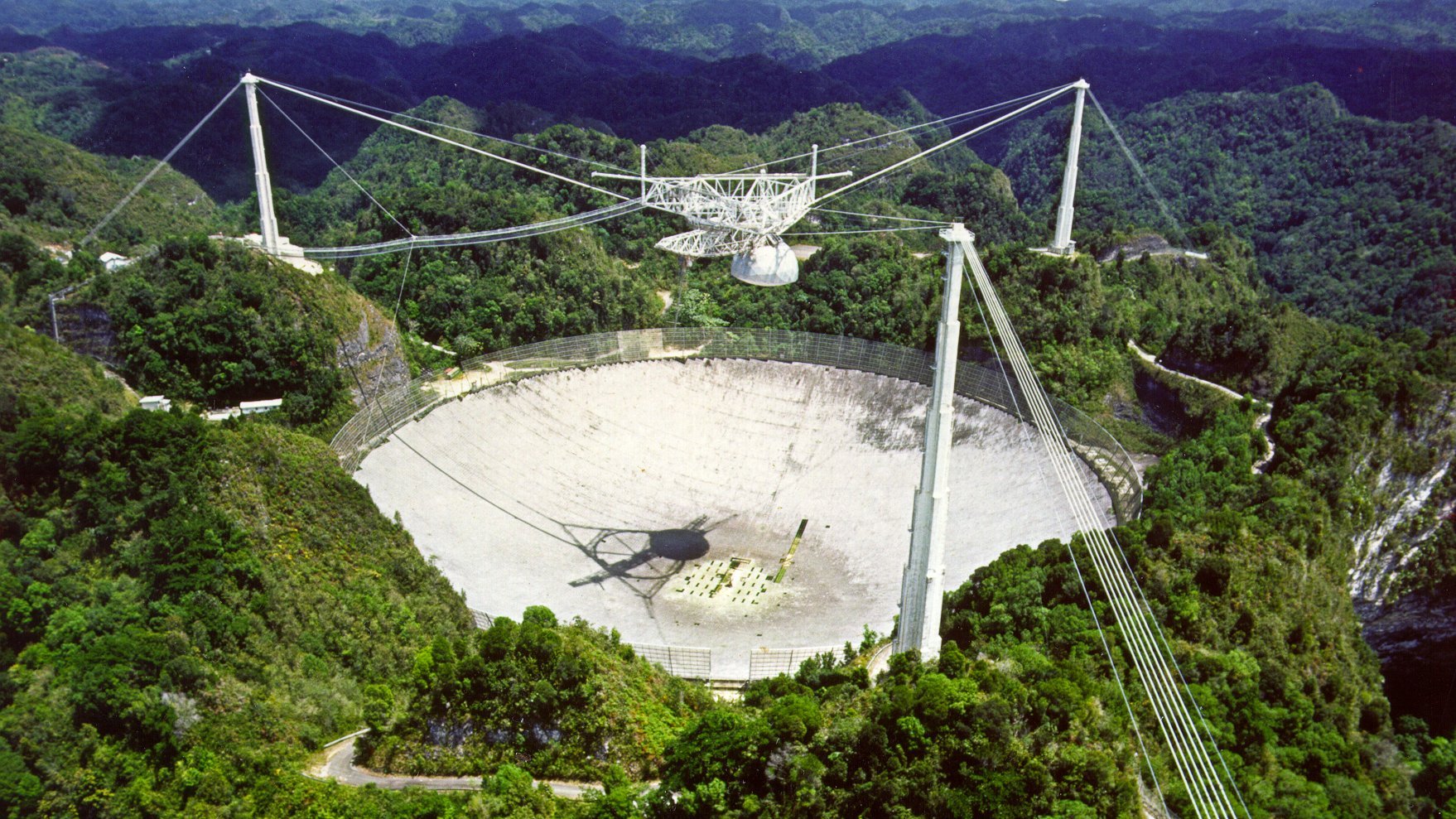On 16 November 1974, the so-called Arecibo message was sent using the giant Arecibo radio telescope in Puerto Rico. This was a gigantic parabolic antenna with a diameter of about 305 metres. The targeted destination of the message was the globular cluster M13, which is about 25,000 light years away from Earth.
The Arecibo message was cleverly designed. It consisted of 1,679 binary numbers arranged in a rectangle with 73 rows and 23 columns. The number of columns was chosen to be a prime number, making it easier to distinguish the message from random background noise. And the number of rows represented the first ten numbers (1-10) and the chemical composition of the DNA molecules. The idea was that an alien civilisation receiving this message might be able to recognise mathematical patterns and understand the building blocks of life.
But there was more: The message also contained a picture of our solar system, a schematic representation of a human being, the chemical building blocks of life and even a sketch of the Arecibo Observatory itself. It was like a coded treasure map into the unknown, waiting to be discovered.
However, there was also criticism of the project. Some scientists expressed concern that it might attract aggressive aliens. After all, we don't know who is out there listening and who might eventually respond to our message. But there is no imminent cause of concern: Due to the long distance to M13, the message still needs to travel thousands of years to arrive at its destination.


